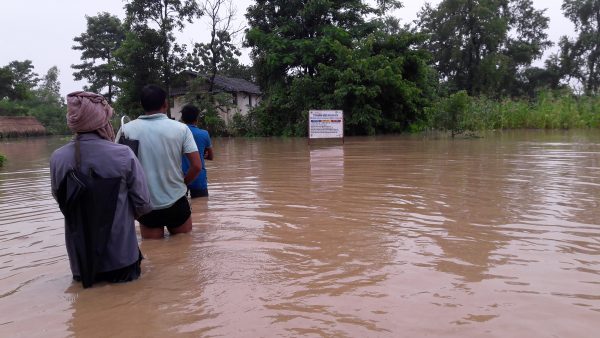We spoke to long time TGT partner Dinanath Bhandari this morning. As the water recedes and Nepal, India and Bangladesh recover from a flood that killed over 1,500 people, he told us about the early warning systems in place across Nepal. Early estimates suggest that over 300 lives were saved in Nepal thanks to the effectiveness of the early warning systems. Dinanath has blogged over on the Practical Action site, explaining how the systems work and how they have steadily improved over time. What is clear though is that there is more work to do. Preparedness is key to saving lives and as Climate Change brings the threat of more and worse flooding. There is a need to learn lessons and act now, at all levels of society, to minimise the tragic impacts floods can have in Nepal and other vulnerable countries.
People moving to safety during Nepal floods 2017. Image courtesy of Practical Action Nepal
An extract from Dinanath's blog, read the full article here.
In this year flood, some components demonstrated success but ultimate response actions had limitations. The weather and flood risk forecasting happened in time, communication were improved but could not generate actionable advisories for particular communities in time. The human and governance parts of the systems are yet to graduate. It lacked specific risk knowledge to take proper actions in right time. As the result there were differentiated flood response actions. Flood early warning should mean people at risk zone are evacuated before flood reaches their location. It’s all about taking people to safety before hazards come. But many people waited flood to arrive at them after they got alerts and warnings. Is it adequate? EWS is part of DRR and preparedness, not a stand alone system.
Practical Action have produced a short video on the early warning system:

